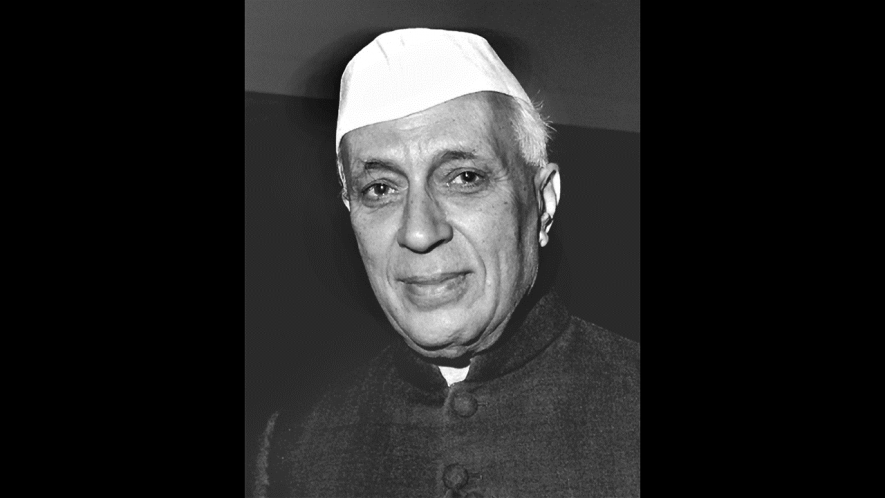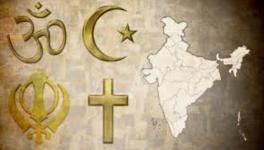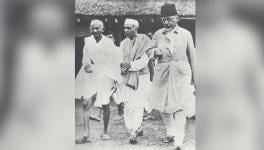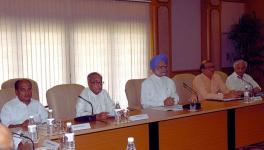Looking at Nehru Through the ‘Myths’ About him

Image Courtesy: Wikimedia Commons
In her new book, Nehru’s India: A History in Seven Myths, published by Princeton University Press, Taylor C Sherman, professor of International History at the London School of Economics, interrogates the meanings of “Nehruvian”. Sherman declares, “The idea is not to demean Nehru, but to humanise him.” Ironically, the book arrives when the first prime minister of independent India is being relentlessly ‘demonised’ by the forces of Hindutva. Even though the latter are midgets compared with Nehru’s gigantic contributions to India.
Jawaharlal Nehru is remembered, and rightly so, for all he did to free India from the clutches of British imperialism. He represented a modernism in stark contrast to his mentor Mahatma Gandhi. The pupil’s distinguished life, like his mentor’s, led to the rise of a neologism, Nehruvian. The word has made it to the reference work, Key Concepts in Modern Indian Studies. The coinage is attached to “secularism, a centrally planned command economy with an emphasis on heavy industrial growth, state-led social and cultural modernisation, scientific and technological accomplishments, and a non-aligned foreign policy”.
Sherman begins by looking at the nature of the policy of non-alignment in foreign affairs. Beginning in 1961, with the meeting of Nehru, Egypt’s Gamal Abdul Nasser and Yugoslavia’s Josip Broz Tito, “complete” non-alignment, argues Sherman, was neither possible nor desirable in a tightly bi-polar world. The neat scholarly packaging of Nehruvian foreign policy is, therefore, a myth. The academic acceptance of the doctrine has been because of the sole reliance on public pronouncements and formal speeches. Lacking full access to files from the Union Ministry of External Affairs, scholars have been led to rely on archives in the United States. The latter is full of the biases and paranoia of United States officials, driven to “imagine the effects of neutralism among newly independent states in catastrophic terms” and thus mistaking the “rhetoric of non-alignment for reality”.
Sherman suggests the best heuristic to understand India’s foreign policy is its “post-imperial” nature. By this, she implies adjusting to the ever-changing dynamics of world politics, marked by decolonisation and a deeply normative commitment to anti-imperialism and its socio-economic aspects. However, the post-imperial nature of foreign policy in no way implied an aggressive opposition to imperialist countries which held formal colonies. Though India did not join any prevailing military pacts, it maintained very close military ties with the West, especially Britain. India got its first Indian Army and Air Force chiefs in 1949 and 1950, respectively, but the highest post in the Indian Navy was held by British men until the first Indian naval chief of staff Vice-Admiral Ram Dass Katari appointed in 1958. An important piece of information Sherman misses is that none of the mutineers who participated in the anti-British Royal Indian Navy uprising of 1946 was accepted back into the service by the post-colonial Indian State. Ideally, a post-imperial State should have brought in the anti-imperial mutineers. For some reason, Pakistan was kind enough to admit the mutineers back, although a British, James Jefford, commanded its navy until 1953.
In the fifteen years after independence, Sherman points out, India bought 214 combat aircraft from France, 55 from the United States and 262 from Britain. Twelve MIG-21 aircraft were purchased from the Soviet Union only in 1962, the first of which was delivered only in 1964. And by Nehru’s death, the Soviet Union accounted for less than 10% of India’s imports. Two things must be kept in mind while discussing India’s trade dependencies. First, India was tied to the imperial trading system thanks to the ‘sterling balances’, or the debt Britain accrued to India during the Second World War, which stood at 1.3 billion pounds. As a result, perforce, India had to trade with Britain and the Commonwealth until the balances were wound down in 1956. Secondly, in real terms, the economic well-being of the Soviet Union was never such as to compete with the capitalist bloc. Oscar Sanchez-Sibony, in his book, Red Globalization, has shown that despite Khrushchev’s “aid offensive” during the 1950s, West German aid to India alone surpassed Soviet aid all the way to 1965 and every year after that to the 1980s. Sherman shows that in 1957 alone, India procured 88% of capital goods required for iron and steel production from West Germany.
The United Nations and the Organisation for Economic Co-operation and Development (OECD) defined aid as providing goods and services with a grant element of at least 25%. An outright grant would have a 100% grant element). On average, Soviet aid, usually given as credit with a 2.5% interest rate over twelve years, had a grant element of 34%. This compared rather badly with Western aid, with an average of 90%.
Overall, non-alignment served two purposes, argues Sherman. First, it helped India not to become dependent on either competing bloc for its needs, thus making good of its post-imperial image at the international level. Secondly, the grammar of non-alignment allowed Nehru to reassure domestic audiences and those on the opposite end of the political spectrum, chiefly the Left, that under his guidance India “was not submitting to a new imperial relationship”.
The Bandung Conference, which gave anti-imperialism, anti-colonialism and anti-racism a fillip and was a high-water mark of India’s normative posture in world politics, contrary to accepted opinion, was not where the non-alignment germinated. The conference was tightly split over questions of Cold War alignments.
On Nehruvian secularism, Sherman’s verdict is it was a mixed success. On the one hand, it meant a non-denominational state in stark contrast to Pakistan. On the other, it meant the covert undercurrent of suspicion of Muslims by the Indian State. The latter did not emanate from the upper echelons of power but from “men on the ground”. The police, local units and Congress party leaders carried this bias. Despite attempts to heal the wounds of Partition and Nehru’s solid commitment to communal reconciliation, the circumstances were too unfavourable to affect a Kemalist-style secularism from the top.
Sherman dissects the use of icons by the Nehruvian State to mark the inclusivity of the Indian nation. The bandying of nationalist Muslim icons as models for the common and beleaguered Muslim masses to emulate became the norm. And this emulation, Sherman argues, was out of reach for ordinary Indian Muslims, especially given the suspicion perpetually directed at them for their inability to live up to the example set by the Indian government’s iconic Muslim nationalist figures. This hangover for the “iconic” and “ideal” nationalist Muslim continues even now. A significant number of Hindus who have given in to the RSS-BJP’s machinations have come to uphold the iconic status of APJ Abdul Kalam as the epitome of a nationalist Muslim. All Muslims who fail to live up to the ideals and achievements of the late physicist are, in short, deemed anti-nationals. The RSS-BJP’s success in making Hindus suspect all Indian Muslims (barring APJ Abdul Kalam!) has roots in the past. This insight Sherman provides directly speaks to our times.
It is beyond doubt that Nehru remained a committed secularist at heart. Sherman throws up many instances, such as his agony over the communal slaughter, his visit to Hyderabad to soothe the wounds of Muslims, and many speeches pointedly asking the nation to unite and build a new India that shuns the menace of communalism.
On Nehruvian socialism, Sherman shows that more often than not, socialism in post-colonial countries is actually developmentalism, with the private sector at the core. She puts to rest many myths about the national ownership of industry. For instance, by the end of the third plan, public sector investment had risen from 3.3% to only 8.3%. The government’s investment in the heavy industrial sector was to benefit the production of intermediary goods, wherein lay the biggest investments of private capital in India. The Planning Commission, too, never started as an institution as it was envisaged to become. It merely had consultative authority and no teeth whatsoever in matters of resource allocation, which remained vested in ministries.
Land reforms also failed to reap the desired results. Landlords with prior intimation of the legislation and in cahoots with the Congress party at the grassroots brought their large holdings nominally under the ceiling by registering it in the name of their relatives, servants and factotums. As they did so, thousands of tenants were evicted, swelling the number of landless labour.
The book has other fine entries on modernism, the nature of the Nehruvian State and democracy. Sherman is informative and analytical at the same time. The book deserves wide reading in India.
The author is a lawyer practising in Delhi. The views are personal.
Get the latest reports & analysis with people's perspective on Protests, movements & deep analytical videos, discussions of the current affairs in your Telegram app. Subscribe to NewsClick's Telegram channel & get Real-Time updates on stories, as they get published on our website.






















